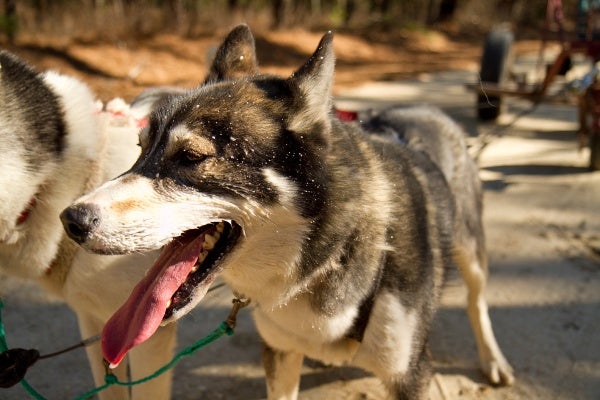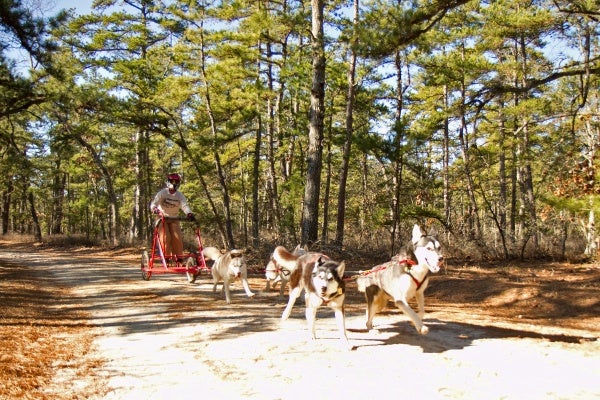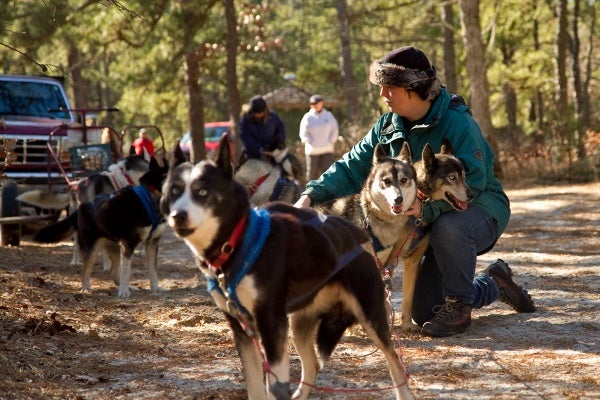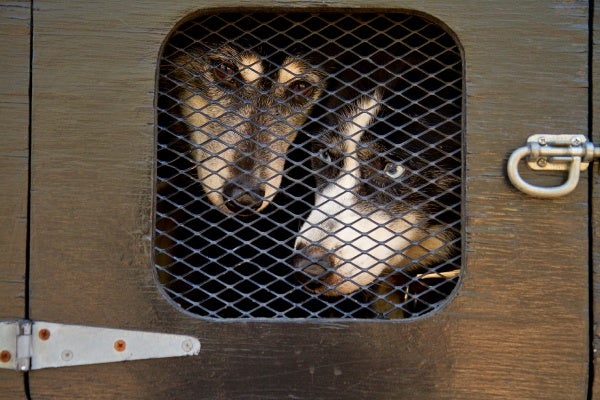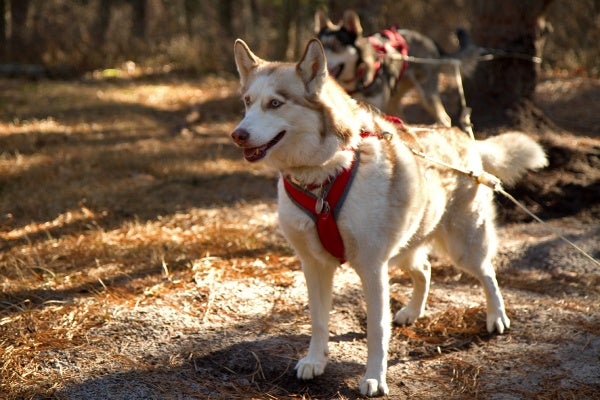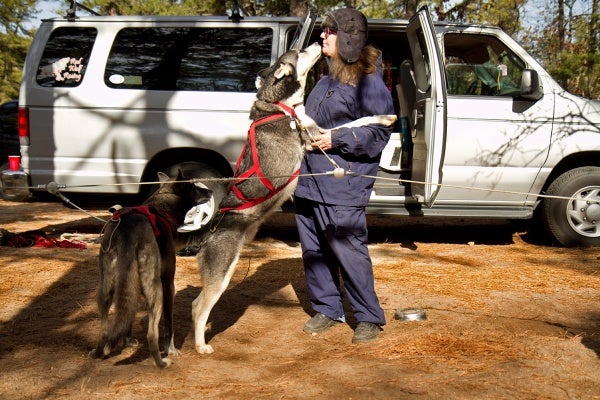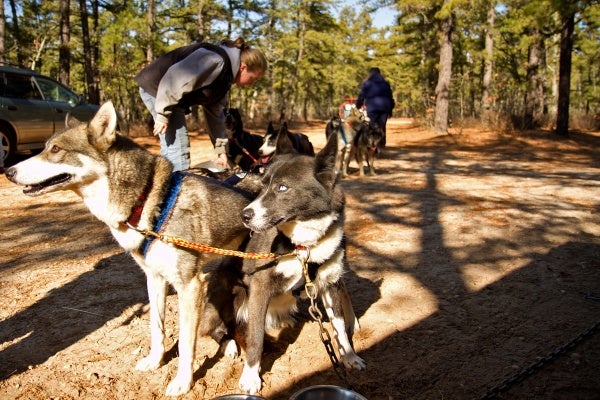Call of the mild: Sled dogs mush through the sands of New Jersey
ListenHardly any snow has fallen in the region this season, making life difficult for skiers and sledders.
It’s no picnic for dogs, either. South Jersey sled dogs depend on freezing weather to do what they do best.
Yes, there are sled dogs in South Jersey.
Related story: Good boy! Dogs know what you’re saying, study suggests
On a Sunday morning, deep in the Pine Barrens, about 35 Siberian Huskies tethered to cables strung between trees strained against their leashes. The din of barking was contagious. They really wanted to run.
“A friend gave me a puppy out of a litter of eight, and they were concerned if I could handle that energy level,” said Stefani Meyer of Bergen County. “He was a handful. He dug out drainage pipes — on all sides and underneath. My yard looked like I was building an oil rig.”
Meyer is a member of the Jersey Sands Sled Dog Racing Association, but “sled” is misleading. South Jersey rarely gets enough snow for sledding, and this winter, not at all. So the dogs pull three-wheeled carts — called gigs — made of bicycle wheels and aluminum frames.
“The more miles I do, the better behaved he is,” said Meyer. “A tired dog is a good dog.”
Almost every week in the winter, members of the association meet in the Pine Barrens to run their dogs through a 4-mile loop.
Pat Quinn-Rillo of Ocean County mushes her 10-dog team with a large gig made from the rear tires of a 1972 Dodge, and a brake with a master cylinder. Loaded up, it can weigh about 350 pounds
Once they are hooked into a line and moving, the dogs are silent. They don’t bark. They don’t whine. They just run.
“I don’t think they do it because they want to do it,” said Quinn-Rillo as she drives her chariot. “They want to run, but dogs do things because you condition them to do it. They really want to run, you just channel that energy.”
Sandy course tougher than snow
Pulling a wheeled cart through the Pine Barrens’ sandy soil is more difficult that pulling a sled over snow — there’s more resistance — so the dogs have to work harder. But it needs to be cold, preferably below freezing. On this day, it’s in the mid-40s.
“It’s warm — I’m out here without gloves, and I’m not uncomfortable,” said Quinn-Rillo. “It’s best when you’re freezing and you can barely stand it. That’s when they’re running the best.”
Dogs cannot sweat — they release body heat by panting. A Siberian Husky’s fur is very good at retaining heat, so running on a 60-degree day can cause heat stroke. Mushing on dirt is strictly a winter sport.
When it’s cold enough, the dogs can pull a gig 20 or 22 mph. On warmer days, they don’t instinctively don’t work as hard. On day with the temperature hovering in the mid-40s, they run about 15 mph.
“Years ago, they started talking about the global warming. I was skeptical … I don’t know. I don’t see that,” said Dave Kulpa, who has been mushing dogs for more than 20 years. “But you know what? It is true. We used to start Labor Day weekend, which is the first weekend of September. Then it was the second week, then the third week. One year, we didn’t get out until November.”
The Jersey Sands Sled Dog Racing Association organizes three races a year. Once a year, members go to a snow race in upstate New York — but no one is thinking about the Iditarod. There’s not enough snow in South Jersey. Even if there were, there aren’t enough trail miles for long-distance training. And many association members aren’t interested in competition.
“It’s a fun to do things with your dogs,” said president Jay Frock. “Some people put them in their backyard, they may walk them once in a while, but they don’t have fun with them. They like to do stuff.
“A dog left idle — especially a working dog — gets into trouble. That’s when they eat your couch,” Frock said.
Many association members have only one or two dogs. They have pets, not teams. At these weekend training events, they combine their dogs to form teams. Association members are so close, many of the dogs are related by blood.
WHYY is your source for fact-based, in-depth journalism and information. As a nonprofit organization, we rely on financial support from readers like you. Please give today.


